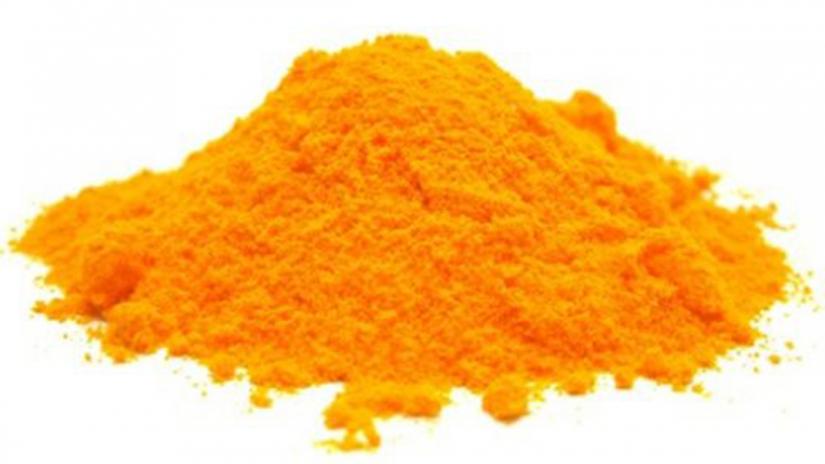 Researchers have detected lead in turmeric powder available in various parts of Bangladesh, raising serious health concerns.
Researchers have detected lead in turmeric powder available in various parts of Bangladesh, raising serious health concerns.
Following the publication of a recent study, the Bangladesh Food Safety Authority (BFSA) has warned all stakeholders not to produce, process, store, transport, buy, sell, or use adulterated turmeric powder.
The study was jointly conducted by Stanford University, USA and International Centre for Diarrhoeal Disease Research, Bangladesh (icddr,b).
Lead is a toxic substance that may lead to nerve and brain damage, heart, digestive and pulmonary disease, or even death. It is particularly dangerous for pregnant mothers, as it can cause stunted growth and birth defects in unborn children.
The BFSA notice said lead was found in turmeric powder samples as lead chromate is used by some unscrupulous traders to artificially brighten the colour of the spice.
BFSA Chairman Sayeda Sarwar Jahan said a team of the regulator, in cooperation with icddr,b visited wholesalers to detect turmeric that contained lead chromate in different parts of Dhaka. While adulterated turmeric was found in some areas, it was absent in others.
“First, we have to detect where the mixing of turmeric with lead chromate is taking place, and then we can go for enforcement by mobile court,” she added.
She further said letters would soon be sent to the eleven deputy commissioners of districts where significant quantities of adulterated turmeric were found, asking them to monitor the situation and take legal action.
How is lead mixed with turmeric?
The study, which was published in Environmental Research journal on Sept 23, was conducted on samples collected from nine districts where turmeric is produced. Lead chromate was found in the turmeric powder from seven districts.
“Dhaka and Munshiganj topped the chart for the highest level of lead-adulterated turmeric, with lead concentration at 1,152 μg (micrograms) per gram of turmeric,” said Professor Stephen P Luby, professor of medicine at Stanford University and senior author of the study.
“Unlike other metals, there is no safe consumption limit for lead; even small doses are toxic to the brain,” Prof Luby added. “We cannot console ourselves by proposing that if the contamination were down to such and such a level, it would have been safe.”
Lead chromate is applied during the polishing process, when the skin is removed from turmeric roots. It is applied in order to make low-quality turmeric resemble higher quality turmeric by brightening its colour.
These findings are based on over 500 samples of turmeric, pigments, dust, and soil and over 150 interviews across the turmeric supply chain, said Dr Mahbubur Rahman, co-author of the study and project coordinator at icddr,b Environmental Interventions Unit.
Soil samples from polishing mills contained a maximum of 4,257 μg (micrograms) lead per gram of soil.
Dr Sharmeen Ahmed, professor of the department of microbiology and immunology at Bangabandhu Sheikh Mujib Medical University (BSMMU), said if lead enters the human body in any way, it will not come out and can damage the kidney and brain.
 Others
Others
30989 hour(s) 51 minute(s) ago ;
Midnight 12:46 ; Tuesday ; Apr 30, 2024
Lead found in turmeric powder
Send
Mizanur Rahman
Published : 10:50, Oct 15, 2019 | Updated : 10:52, Oct 15, 2019
Published : 10:50, Oct 15, 2019 | Updated : 10:52, Oct 15, 2019
0 ...0 ...
/pdn/
Topics: Top Stories
- KOICA donates medical supplies to BSMMU
- 5 more flights to take back British nationals to London
- Covid19: Rajarbagh, Mohammadpur worst affected
- Momen joins UN solidarity song over COVID-19 combat
- Covid-19: OIC to hold special meeting
- WFP begins food distribution in Cox’s Bazar
- WFP begins food distribution in Cox’s Bazar
- 290 return home to Australia
- Third charter flight for US citizens to return home
- Dhaka proposes to postpone D8 Summit
Unauthorized use of news, image, information, etc published by Bangla Tribune is punishable by copyright law. Appropriate legal steps will be taken by the management against any person or body that infringes those laws.
Bangla Tribune is one of the most revered online newspapers in Bangladesh, due to its reputation of neutral coverage and incisive analysis.
F R Tower, 8/C Panthapath, Shukrabad, Dhaka-1207 | Phone: 58151324; 58151326, Fax: 58151329 | Mob: 01730794527, 01730794528


